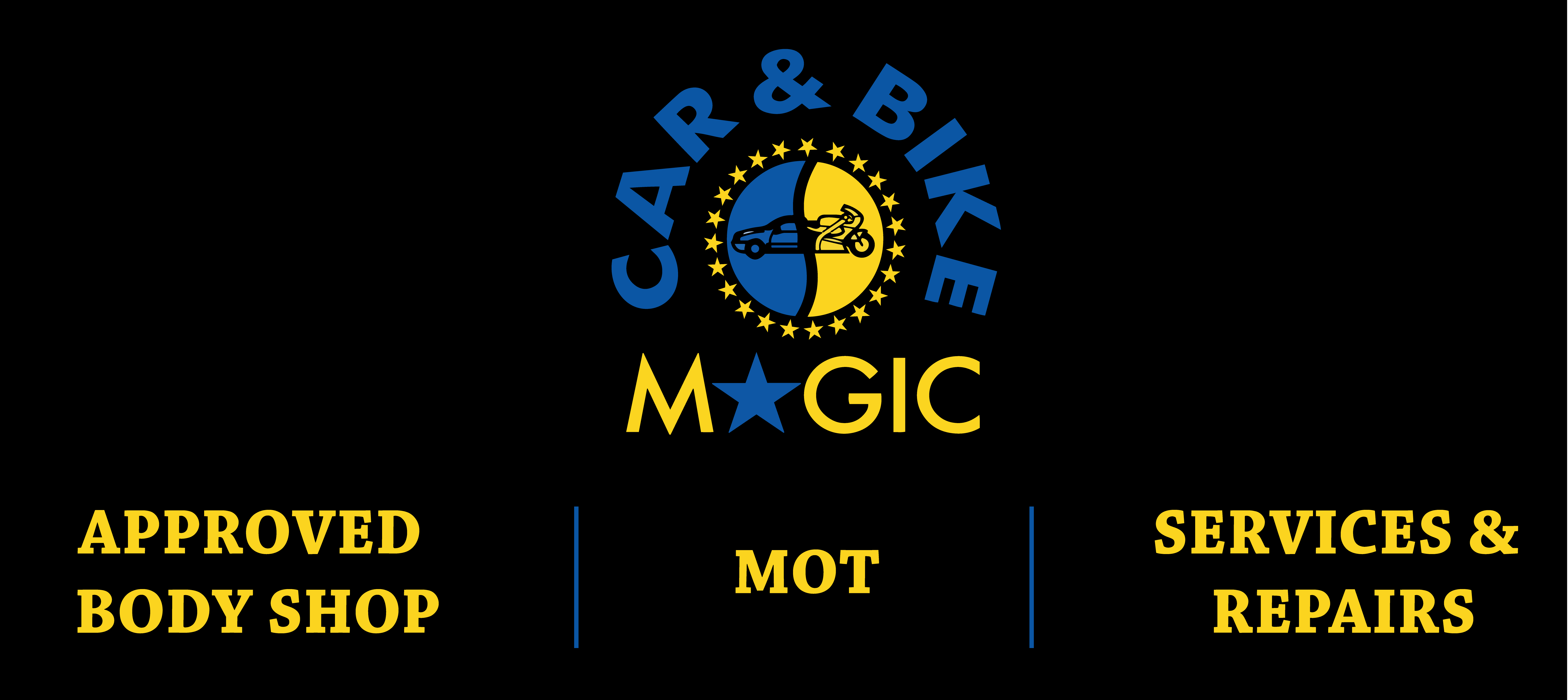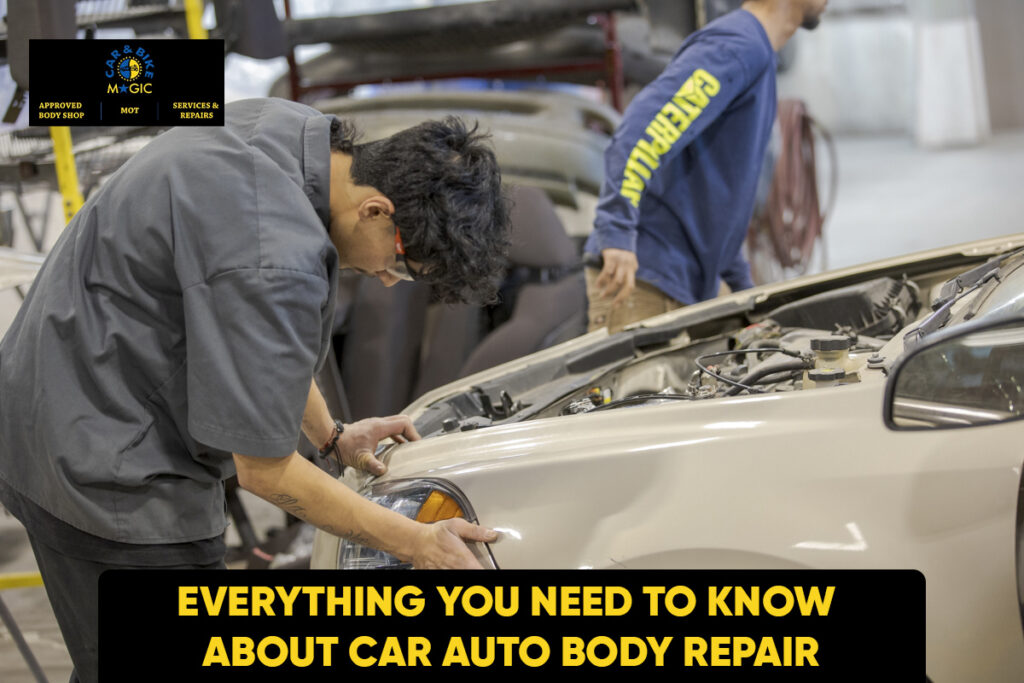When your car’s exterior takes a hit—whether from a minor scratch or an exemplary image—it can affect your vehicle’s performance and safety, from fixing dents and repainting panels to restoring frames and bumpers and resale value. Includes professional car auto body repair. From fixing dents and repainting panels to restoring frames and bumpers, the right repair service can make your vehicle look and feel brand new again.
This guide breaks down everything you should know about the auto body repair process, your repair options, cost factors, and why professional help often outweighs DIY fixes. Whether you’re here for collision repair or just curious about auto body restoration, you’ll leave with the knowledge to make the best decision for your car.
Understanding the Basics of Car Auto Body Repair
Car auto body repair is the process of restoring your vehicle’s exterior after damage. This can range from car scratch repair to complex frame repair following an accident. Professionals use specialized tools, advanced techniques, and high-quality materials to ensure the repair blends seamlessly with the original finish.
For example, a small door ding might be handled with paintless dent repair, which maintains your car’s original paint and is often quicker and more affordable. On the other hand, severe collision damage might require auto body painting, welding, and even structural straightening. The goal is always the same—restore safety, function, and appearance.
The Common Types of Auto Body Damage
Vehicles encounter all kinds of exterior damage. Some of the most common include:
- Minor Dents & Dings—Often from parking lot mishaps or hail.
- Scratches & Scuffs—From accidental brushes against objects or other cars.
- Bumper Damage—Cracks, dents, or complete detachment after low-speed impacts.
- Frame Damage—Usually from major accidents, impacting vehicle alignment and safety.
Exactly handle every repair stage. Car dent repair might be completed in hours, while frame repair can take days. For professional help, check Car & Bike Magic’s car body repair services, where trained specialists handle every repair stage with precision.
Step-by-Step Process of Professional Collision Repair
When you take your vehicle to an auto body shop for collision repair, here’s what you can typically expect:
- Damage Assessment—Technicians evaluate visible and hidden damage.
- Cost Estimate—You’ll receive a detailed repair quote.
- Disassembly—Parts are removed to access deeper damage. Then removal, welding, car bumper repair, and more.
- Painting & Refinishing—Panels are prepped, painted, and sealed for a visual breakdown.
- Reassembly & Quality Check—Everything is put back together and tested.
For a visual breakdown, the Halfords 4-step repair process is a good reference—but professional shops often add more steps for accuracy and safety.
Paintless Dent Repair: A Game-Changer
Not all dents need sanding and repainting. Paintless dent repair (PDR) is a cost-effective method that preserves your car’s factory paint, saves money, and removes the dent from behind the panel using specialized tools.
This technique works best for:
- Small to medium-sized dents
- Damage without paint chips or cracks
- Aluminum and steel panels
PDR not only saves money but also keeps your car’s resale value intact since no repainting is involved. Our detailed DIY vehicle repair guide explains when PDR is a good option.
Why Auto Body Painting Matters
A flawless finish is the final step in most auto body restoration projects. Professional auto body painting ensures the repaired area perfectly matches the rest of the vehicle. This involves:
- Color Matching—Using computer systems to blend new paint with old. Trust priming for smooth results.
- Clear C if you want showroom quality– Adds shine and protects from UV damage.
While DIY touch-up kits exist, they rarely deliver the same seamless look as a professional job. If you want showroom quality, trust an expert shop like Car & Bike Magic.
DIY vs. Professional Auto Body Repair
Doing repairs yourself might save money upfront, but it’s not always the best route. Here’s the breakdown:
DIY Pros:
- Cheaper for minor fixes
- Immediate control over the Many Cons:
- Risk of poor quality
- Potential for further damage
- No professional warranty
Professional services, on the other hand, provide certified expertise, proper tools, and high-quality finishes. In fact, many repairs—especially frame repair and collision repair—require industry-grade equipment you won’t have at home.
Cost Factors in Car Auto Body Repair
The price of auto body repair depends on:
- Type & Extent of Damage—complete scratches cost less than structural damage.
- Parts & Materials—OEM parts are pricier than aftermarket alternatives.
- Labor Rates—Vary by region and shop reputation.
- Additional Services—Such as detailing or full repainting.
Final Thoughts
Car auto body repair is more than just making your vehicle look nice—it’s about safety, performance, and long-term value. From paintless dent repair to full auto body restoration, investing in professional services can save you time, stress, and money in the long run.
Next time you notice a dent, scratch, or worse, remember that expert technicians can restore your car to its pre-accident glory. And with trusted professionals like Car & Bike Magic, you’ll know your vehicle is in skilled hands.
FAQs
Q1: How long does auto body repair take?
Minor repairs may take a few hours, while major collision repairs take a week or more, depending on parts availability.
Q2: Is paintless dent repair permanent?
Yes, when done professionally, PDR restores the panel permanently without weakening the metal.
Q3: Will my car look exactly the same after repairs?
A skilled shop will match paint and texture so well that you can’t tell the difference.
Q4: Can I drive my car with body damage?
It depends on the severity. Cosmetic damage is fine, but structural damage can be unsafe.
Q5: How do I choose a good auto body repair shop?
Look for certifications, positive reviews, and examples of past work.

